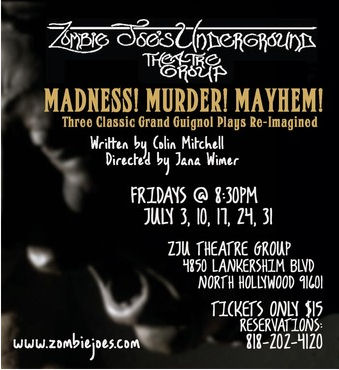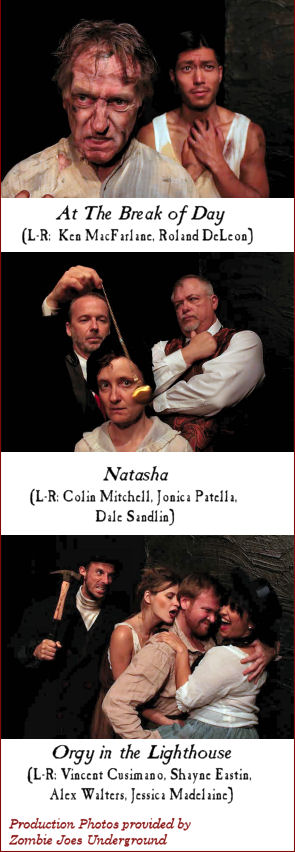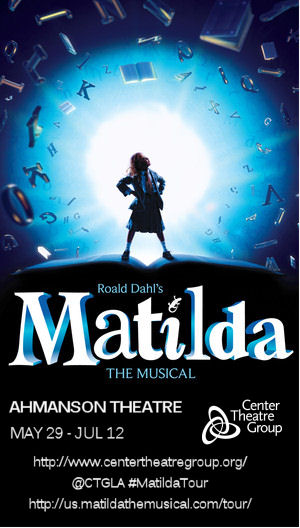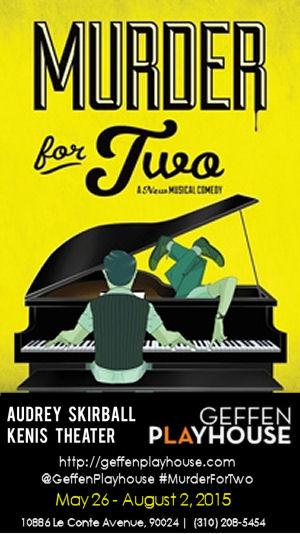
 When I went to Jewish Summer Camp in the early 1970s, there were two “Jesus”-based musicals going around. One, Godspell, gave us a song we actually sang at camp: “Day by Day”. Out of context, it worked just fine. The other was this brown album with a stylized angel on it, and it gave us a song we sang as “Jesus Christ / Superstar / Who In The Hell Do You Think You Are”. The words aren’t too surprising for a Jewish summer camp. I mention this because that was really my knowledge of the musical Jesus Christ Superstar up to last night. I had seen Godspell a number of times and tended to like it because it wasn’t so “in your face” for a non-Christian. From what little I had heard or seen, JCS was much more in your face, heavy rock, and screamy. In recent years I had finally heard the music — and there were a few songs I liked — but still hadn’t seen the show either on stage or on screen. So when REP East Playhouse (FB) in Newhall, where we subscribe, announced the show for this season, I was looking forward to finally seeing it. Last night I finally saw it. I came away disappointed, unsure of what all the fuss was about. REP gave it a good effort, but it just didn’t strike that chord for me. As always, your mileage may vary.
When I went to Jewish Summer Camp in the early 1970s, there were two “Jesus”-based musicals going around. One, Godspell, gave us a song we actually sang at camp: “Day by Day”. Out of context, it worked just fine. The other was this brown album with a stylized angel on it, and it gave us a song we sang as “Jesus Christ / Superstar / Who In The Hell Do You Think You Are”. The words aren’t too surprising for a Jewish summer camp. I mention this because that was really my knowledge of the musical Jesus Christ Superstar up to last night. I had seen Godspell a number of times and tended to like it because it wasn’t so “in your face” for a non-Christian. From what little I had heard or seen, JCS was much more in your face, heavy rock, and screamy. In recent years I had finally heard the music — and there were a few songs I liked — but still hadn’t seen the show either on stage or on screen. So when REP East Playhouse (FB) in Newhall, where we subscribe, announced the show for this season, I was looking forward to finally seeing it. Last night I finally saw it. I came away disappointed, unsure of what all the fuss was about. REP gave it a good effort, but it just didn’t strike that chord for me. As always, your mileage may vary.
Jesus Christ Superstar (JCS for short) was the first musical from the team of Andrew Lloyd Webber (FB) and Tim Rice (FB) to hit America (Joseph was written earlier, but was imported to the US after JCS became a success). It was released first as a rock concept album — that aforementioned brown album — and became a hit. This led to the album being staged on Broadway by the same director that had done Hair. On Broadway — just as with Wicked — the critics almost universally panned the show, but the audiences loved it. JCS can be said to have started the era of sung-through musical — we can blame JCS for not only Evita, Sunset Boulevard, Starlight Express, Phantom of the Opera, and Cats, but for spawning shows like Les Miserables, Miss Saigon, Tale of Two Cities, and the recent fringe show, The Count of Monte Cristo.
JCS essentially relates the well-known story of the last eight days of the man Jesus of Nazareth. Spoiler: He dies in the end (it does not show the resurrection). I’m not sure I need to relate the particulars of the story; if you need to see the plot synopsis, it is on the Wikipedia page. The story really focuses on the relationship between Jesus, Judas, and Mary. Judas, who plays the central driving figure in the story, is disappointed that Jesus seems to have veered away from the focus of his ministry. Under what he sees as the influence of Mary, Judas believes that Jesus is spending funds on oils and ointments instead of using it to help the poor and needy. He becomes increasingly disillusioned with Jesus, moving to the point (as we all know) of betraying him to the authorities, which leads to his crucifixion. As Jesus gets pilloried by the authorities, we also see how many of his disciples appear to turn away from him as well, just as today popular media can turn people away from heroes of old. Only Mary stays steadfastly by Jesus’ side. At the end, they return remembering how he affected their lives.
The love triangle presented in story, as JCS presents it, is likely what drew youth into the story. The triangle: close friend disillusioned when the new woman in his bro’s life turns him away is classic — and it is an interesting take on Jesus’ life. I don’t know the extent to which this subtext, however, is actually in the gospels.
Unlike Godspell, which teaches Jesus’ lessons and focuses less on the actual life story, JCS really doesn’t teach what Jesus said about living. Through Judas, it seems to show how he turned away from what he was teaching. It shows Jesus as bargaining with God, trying to figure out his role in all of this. Ultimately, he is convinced he has to die in order to make his message. To me, a non-Christian, the portrayal of Jesus by Rice and Webber is a negative one. Here is a nice guy, trying to minister to the poor, but his followers inflate his ministry for their own purposes and for their own immortality (listen to the words in “The Last Supper”: “Always hoped that I’d be an apostle / Knew that I would make it if I tried / Then when we retire we can write the gospels / So they’ll all talk about us when we’ve died”). Rice and Webber portray Jesus as ultimately betraying his cause and his work to make that larger message, of being a reluctant messiah — in essence, of being a fraud. Look at the main lyric of the title song: “Jesus Christ, Superstar / Do you think you’re what they say you are”. Rice and Webber portray Judas as seeing through this, and trying to return Jesus to the right path. That’s certainly not the story of Jesus that I (a non-Christian) have gleaned over the years. I think it is ultimately a negative portrayal of Jesus, with lyrics that are screaming and not always melodic.
Even worse, I think that JCS perpetuates the antisemitic nature of the Gospels. Look at “King Herod’s Song”, and particularly the “Trial Before Pilate”. What comes across is that the Jews are viewed in a negative sense, and that the Romans are really reluctant to kill Jesus — but (as the song says) it is the Jews that demand that the Romans find a reason to do so.
Suffice it to say that I’m not enthused about the presentation of the story, and I now understand why I preferred Godspell. There are some versions of Godspell that can get a bit preachy, but they do not get anti-anything. JCS does. It has a few songs that I like, particularly “I Don’t Know How To Love Him”, but the show just turns me off. My guess is that this would be the case irrespective of the venue producing the show (although I am now curious about the highly-touted DOMA version).
Let’s now turn to the REP interpretation of the show, understanding how that may have been colored based on the book itself. Alas, this too was disappointing due to a number of factors, but I’ll ultimately chock it up to directoral vision combined with technical issues. As directed by Rick Pratt (FB), the show had a minimalist set staging (there were no real set pieces at all), with loads of odd lighting and paint choices that served to distract from rather than support the story. The pre-recorded music tended to overpower the voices, which were not helped by microphones that kept cutting in and out and having a fair amount of hiss. This was not the usual REP set, sound, or lighting quality — every theater has an aberration occasionally. Due to all this, the focus ultimately was on the cast and their relationships and emotions; given the sung through nature of the show, that had to come across in the quality and clarity of the songs and how they were sung. The cast tried hard to overcome these problems, but it never quite meshed with the demands the overwrought Webber/Rice story required.
As a quick aside, I also believe this is a story that works much better with live music. Live, as opposed to pre-recorded music, gives that extra energy that a rock opera such as this requires. The director, Rick Pratt, had experience with live on-stage music before at the REP and that worked very very well, and I wish he had been able to figure out a way to make the music live.
[Edited to Add: Based on some discussions with the REP, it looks like this will be transitioning to live music by 7/24. This should improve the production and energy greatly.]
In JCS, the central character driving the story is Judas. It is he that frames the initial opening direction of the story in “Heaven on Their Minds”; it is he that is there criticizing Jesus’s relationship with Mary; it is he that interacts with the High Priests; and it is he that ultimately faces Jesus in the end. His role is quite similar to the one that Rice/Webber would use again for Che in Evita. You need a powerhouse rock singer here — one that can not only act, but sing loud and clear to get the message across. You also need an actor who can just have that unspeakable presence. Adam Duarte tries very hard, and occasionally got the tone right, but didn’t have the consistency needed. Further, his attempt to be rock-ish made it difficult to hear the words clearly — and hearing the words is vital when the songs are the only thing moving the story forward.
The second part of the main triangle in the story is Jesus, who was played by Benjamin Patrick Thomas (FB). Benjamin sang well when we saw him in Return to the Forbidden Planet (also directed by Pratt). For the most part, he did well here but had a lot of trouble with the upper end of the range on some of Jesus’ songs. He also had seemingly the wrong look, but I can’t put my finger on why — as a mid-thirties white bearded hippie, he certainly didn’t fit the conventional picture of Jesus; then again, we don’t know what Jesus looked like.
The third part of the triangle — and one of the standouts in the show — was Natasha J. Gaston (FB) as Mary Magdalene. Gaston’s Mary conveyed wonderful emotions, and had a wonderful singing voice that she put to great use in “I Don’t Know How To Love Him” and “Everything’s Alright”. The quality of this voice came through even as her microphone kept cutting in and out and over a large amount of amplification hiss. I hope that we see more of this lovely actress.
As the opposition leadership, Chris Loprete (FB) [Pontius Pilate], Paul Nieman (FB) [Caiphas], and Ally Loprete (FB) [Annas] did well. All three sang well and were able to convey their emotions through song. The costuming seemed a bit strange, especially the overly clingy and sexy number for Annas, who was supposedly a high priest, and the devilish dark red suit for Caiphas. [ETA: When I read this paragraph after seeing the show a second time, I realized that I was confusing Pilate with Sean Goodman/FB [Ensemble], who placed the third part of the Sanhedrin. Loprete’s Pilate was goot, but wasn’t part of the main opposition leadership.]
In the ensemble and playing a number of smaller roles were: Alex Bowman (FB) [Peter / Ensemble], Tara Cox/FB [Simon Zealotes / Ensemble], Michael Davies [King Herod / Ensemble], Eriel Brown (FB) [Ensemble / Dance Captain], Laura Norkin/FB [Ensemble], Marie-Clarie Erdynast/FB [Ensemble], Danielle Honeyman (FB) [Ensemble], Sean Goodman/FB [Ensemble], Bruce Robinson/FB [Ensemble], and Micahel Gilbertson/FB [Ensemble]. In the ensemble positions, all blended well, sang reasonably well, and had obvious fun portraying their characters. There are a few worthy of special comment. Tara Cox/FB was another of those actors with a voice above the rest; it came across quite strongly in the few solo numbers and portions of numbers that she had. We’ve seen Michael Davies before in Forbidden Planet. He was good in King Herod’s number (one of my favorites on the album), but didn’t quite have the right sense of the cat playing with the mouse that was required, and that feeds the righteous indignation that feeds the end of the number. The focus was the cutesy, not the message. Eriel Brown (FB) moved and danced well, and seemed (if I was picking her out right) to have a very nice singing voice. Lastly, Danielle Honeyman (FB) was fun to watch in the ensemble. Again, if I was hearing correctly, I heard a slightly operatic voice and tone.
As noted before, JCS was directed by Rick Pratt (FB) and Kimbyrly M. Valis (FB). Carla Bellefeuille (FB) was the vocal director, assisted by Justin G. Horwitz/FB. Erin Cholakian (FB) was the choreographer. I’ve commented before about the directoral vision. JCS is a hard show to get correct in a small venue, so I do applaud the directoral team for trying. Their choices didn’t work for me; it might work for others. I feel their attempt was hurt by the inability to have live music. It was also hurt by the current battle between intimate theatres and AEA that has led REP to go non-union; JCS in particular is a show that would have been helped greatly to have the additional seasoning, talent, and stage presence in the lead positions. I think the team did the best with what they had to work with. The choreography, on the other hand, worked well given the limited REP space; it is always nice to see dance on the REP stage.
[ETA: There was also an odd projection sequence during the overture music going through all sorts of historical scenes. The purpose was unclear — was it meant to say that this was done in Jesus’ name? What was the point? Further, given the uneven surface at the back of the theatre, the projections were hard to see and read.]
I’ve also noted before the various technical problems. The set design was minimal: some ramps, some raised stages, a cross that could be lowered, and some inexplicable painted lines on the floor and on the wall. This is not the style of set design that REP normally does, and it didn’t work for me (but then again, I’ve never seen JCS before — perhaps this is the concept). There were also significant problems with the sound — I don’t know if it was the design of Steven “Nanook” Burkholder/FB or problems with the wireless mics on the performers and difficulties at the sound board. In any case, it served to distract more than amplify. Although TC was listed as the resident lighting designer, lighting credit for this show was given to Jeffrey Hampton. The lighting was odd — there were odd flashes during songs that I’m guessing were meant to be rock opera-ish. There were also points where characters were singing or moving in the dark, which shouldn’t be the case. I don’t know what to say about the costume design by Chelsea Jones/FB: they attempted to update this to some unspecified era so that the costumes were some odd eclectic mix of robes, sexy shorts, spandex, hippie threads, jeans and T-shirts, and suits. My wife noted that there were numerous fitting problems. Calliope Weisman/FB was the stage manager. REP is under the artistic direction of Mikee Schwinn/FB.
Jesus Christ Superstar continues at REP East (FB) in Newhall (Santa Clarita) through August 15, 2015. Tickets are available through the REP online box office. Discount tickets are available through Goldstar. I’m not a fan of JCS, but you might be.
After JCS concludes its run, REP will be presenting a special two-weekend “81 series” production of A Company of Wayward Saints by George Herman, a commedia del arte type show. Tickets are available through the REP website.
Ob. Disclaimer: I am not a trained theatre critic; I am, however, a regular theatre audience member. I’ve been attending live theatre in Los Angeles since 1972; I’ve been writing up my thoughts on theatre (and the shows I see) since 2004. I do not have theatre training (I’m a computer security specialist), but have learned a lot about theatre over my many years of attending theatre and talking to talented professionals. I pay for all my tickets unless otherwise noted. I am not compensated by anyone for doing these writeups in any way, shape, or form. I subscribe at three theatres: REP East (FB), The Colony Theatre (FB), and Cabrillo Music Theatre (FB). Through my theatre attendance I have made friends with cast, crew, and producers, but I do strive to not let those relationships color my writing (with one exception: when writing up children’s production, I focus on the positive — one gains nothing except bad karma by raking a child over the coals). I believe in telling you about the shows I see to help you form your opinion; it is up to you to determine the weight you give my writeups.
Upcoming Shows: July is a month of double-headers. Next weekend is another double header: “The History Boys” at the Stella Adler Theatre (FB) on Saturday (Goldstar), and “Green Grow The Lilacs” at Theatricum Botanicum (FB) on Sunday. The last weekend of July brings our last double: “Lombardi” at the Lonny Chapman Group Rep (FB) on July 25th, with the annual Operaworks show the next day. August start calming down, with “As You Like It” at Theatricum Botanicum (FB) the first weekend of August, our summer Mus-ique show the second weekend of August, and “The Fabulous Lipitones” at The Colony Theatre (FB) the third weekend of August. After that we’ll need a vacation … but then again we might squeeze in Evita at the Maui Cultural Center (FB) the last weekend of August. September right now is mostly open, with the only ticketed show being “The Diviners” at REP East (FB) and a hold-the-date for “First Date” at The La Mirada Theatre for the Performing Arts (FB). October will bring another Fringe Festival: the NoHo Fringe Festival (FB). October also has the following as ticketed or hold-the-dates: Kelrik Production (FB)’s Urinetown at the Monroe Forum Theatre (Hold for Sat 10/3); “Mrs. A. Lincoln” at The Colony Theatre (FB) (Ticketed for Sat 10/10); and “Damn Yankees” at Cabrillo Music Theatre (FB) (Ticketed for Sat 10/17). As always, I’m keeping my eyes open for interesting productions mentioned on sites such as Bitter-Lemons, and Musicals in LA, as well as productions I see on Goldstar, LA Stage Tix, Plays411.

 [Excuse the barrage of posts today — I’m finally catching up after a busy two weeks]
[Excuse the barrage of posts today — I’m finally catching up after a busy two weeks]


 When I went to Jewish Summer Camp in the early 1970s, there were two “Jesus”-based musicals going around. One, Godspell, gave us a song we actually sang at camp: “Day by Day”. Out of context, it worked just fine. The other was this brown album with a stylized angel on it, and it gave us a song we sang as “Jesus Christ / Superstar / Who In The Hell Do You Think You Are”. The words aren’t too surprising for a Jewish summer camp. I mention this because that was really my knowledge of the musical Jesus Christ Superstar up to last night. I had seen Godspell a number of times and tended to like it because it wasn’t so “in your face” for a non-Christian. From what little I had heard or seen, JCS was much more in your face, heavy rock, and screamy. In recent years I had finally heard the music — and there were a few songs I liked — but still hadn’t seen the show either on stage or on screen. So when
When I went to Jewish Summer Camp in the early 1970s, there were two “Jesus”-based musicals going around. One, Godspell, gave us a song we actually sang at camp: “Day by Day”. Out of context, it worked just fine. The other was this brown album with a stylized angel on it, and it gave us a song we sang as “Jesus Christ / Superstar / Who In The Hell Do You Think You Are”. The words aren’t too surprising for a Jewish summer camp. I mention this because that was really my knowledge of the musical Jesus Christ Superstar up to last night. I had seen Godspell a number of times and tended to like it because it wasn’t so “in your face” for a non-Christian. From what little I had heard or seen, JCS was much more in your face, heavy rock, and screamy. In recent years I had finally heard the music — and there were a few songs I liked — but still hadn’t seen the show either on stage or on screen. So when 
 For better (or some might say, for worse), I’ve gotten to know
For better (or some might say, for worse), I’ve gotten to know  The first playlet, At The Break of Day, tells the story of Lacazze (
The first playlet, At The Break of Day, tells the story of Lacazze ( Today, while eating lunch, I came across an article titled: “
Today, while eating lunch, I came across an article titled: “ Recently, over on Facebook, I’ve gotten into a discussion with some of my more devout friends about
Recently, over on Facebook, I’ve gotten into a discussion with some of my more devout friends about  It’s been stewing on the stove for two weeks because I’ve been so busy. Let’s hope it is still tasty and flavor-right. Here’s your news chum stew for the last two weeks:
It’s been stewing on the stove for two weeks because I’ve been so busy. Let’s hope it is still tasty and flavor-right. Here’s your news chum stew for the last two weeks:
 Supposed I told you that I had just seen a musical about a girl who had been bullied all her life, and who had decided to get revenge — in particular, psycho-kinetic revenge — upon those who had bullied her? You probably would have thought I had just been to see
Supposed I told you that I had just seen a musical about a girl who had been bullied all her life, and who had decided to get revenge — in particular, psycho-kinetic revenge — upon those who had bullied her? You probably would have thought I had just been to see 
 Last August, when we saw
Last August, when we saw